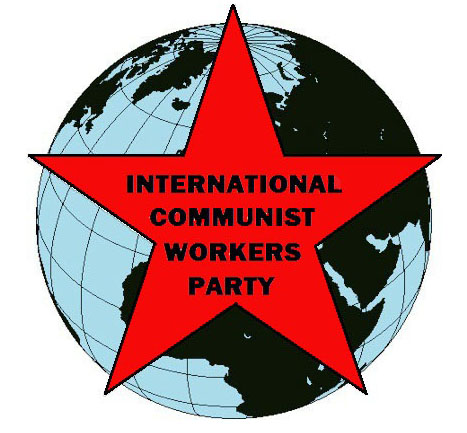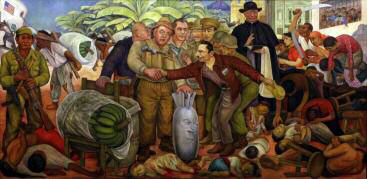
 |
FIGHT FOR COMMUNISM! |
International Communist Workers Party | |

It was unusually hot on December 6th, 1928 in Santa Marta, Colombia. The Boston-based United Fruit Company (now Chiquita) had set up massive banana plantations there. The business was hugely profitable as tens of thousands of workers labored in swamps for over 14 hours a day, every day of the week. Malaria, cholera and other deadly diseases were widespread.
But for the United Fruit Company, only profit mattered. It would replace the dead with starving workers to keep the banana plantations flourishing. The workers were not paid in cash, but in company-issued vouchers to be used in company stores to buy the necessities. Most of the company stores had nothing but empty shelves.
The banana workers struck in November, 1928. They demanded cash payment and a 6-day work week. They found the railroad workers, who transported the bananas to be shipped to US and Europe, to be on their side. The United Fruit Company was panicking. The Colombian soldiers who came from poor village were unwilling to fight.
The company asked the conservative government of Miguel Méndez to organize to rein the strikers in. A US naval flotilla was steaming at full speed towards Cartagena, Colombia, to rescue the United Fruit Company in case of a full- blown ‘Sovietizing’ of Colombia, as a desperate cable from a US diplomat described the situation.
On December 8, 1928, after a crippling strike of over a month, the United Fruit Company decided to negotiate. It was only a ploy, as it sent a liberal representative of the government to talk to the workers. Thousands of workers and their families poured into the plaza of Ciénaga hoping for a favorable outcome of the strike.
General Carlos Vargas and his heavily armed, hand-picked troops on the hilltops started firing their guns into the plaza. Workers and family members were massacred in the uncounted thousands. Even today, in the swamps of Santa Marta, dead bodies surface from the massacre that is known as the Banana Massacre.
The strike by the workers in Santa Marta was an outcome of successful May Day demonstrations in major cities of Colombia in 1928. In spite of severe repression, the workers came out in large numbers on May Day. They were inspired by the success of the workers, led by the Bolsheviks, in seizing state power in Russia under similar conditions.
However, the weaknesses of the Bolshevik revolution haunted the banana workers. The Bolsheviks did not create communist society, but instead kept wage slavery. This outlook created illusions among the international working class that they could negotiate better terms and conditions for wage slavery.
As the banana workers’ experience shows, negotiations with the bosses for better wage slavery lead to massacres. The fight against apartheid in South Africa has further exposed the bankruptcy of negotiating with the bosses.
From the swamps of Santa Marta in Colombia to the deep platinum mines of Marikana in South Africa, the international working class must be organized to end wage slavery. ICWP is leading the international working class to end the rule of capitalist bosses. The international working class united under the banners of ICWP will avenge the massacres of Santa Marta and Marikana, and of the normalistas of Ayotzinapa.